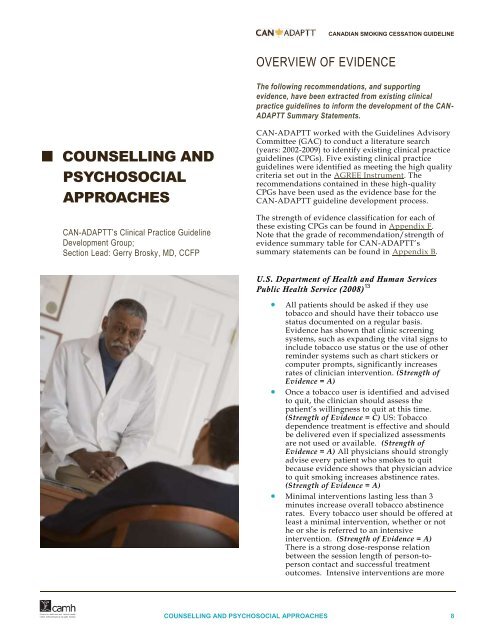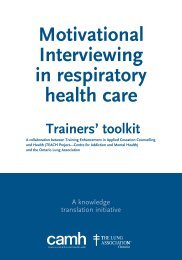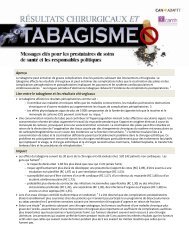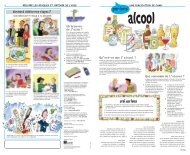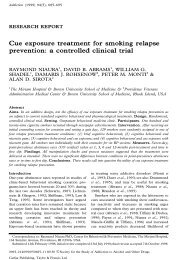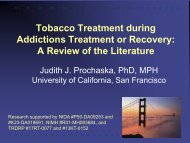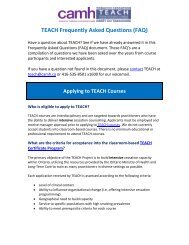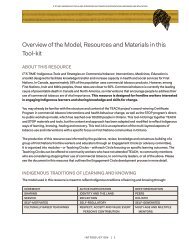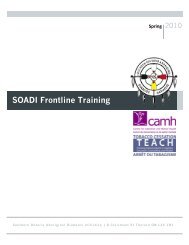Canadian Smoking Cessation Clinical Practice Guideline
Canadian Smoking Cessation Clinical Practice Guideline
Canadian Smoking Cessation Clinical Practice Guideline
You also want an ePaper? Increase the reach of your titles
YUMPU automatically turns print PDFs into web optimized ePapers that Google loves.
CANADIAN SMOKING CESSATION GUIDELINEOVERVIEW OF EVIDENCEThe following recommendations, and supportingevidence, have been extracted from existing clinicalpractice guidelines to inform the development of the CAN-ADAPTT Summary Statements.• COUNSELLING ANDPSYCHOSOCIALAPPROACHESCAN-ADAPTT’s <strong>Clinical</strong> <strong>Practice</strong> <strong>Guideline</strong>Development Group;Section Lead: Gerry Brosky, MD, CCFPCAN-ADAPTT worked with the <strong>Guideline</strong>s AdvisoryCommittee (GAC) to conduct a literature search(years: 2002-2009) to identify existing clinical practiceguidelines (CPGs). Five existing clinical practiceguidelines were identified as meeting the high qualitycriteria set out in the AGREE Instrument. Therecommendations contained in these high-qualityCPGs have been used as the evidence base for theCAN-ADAPTT guideline development process.The strength of evidence classification for each ofthese existing CPGs can be found in Appendix F.Note that the grade of recommendation/strength ofevidence summary table for CAN-ADAPTT’ssummary statements can be found in Appendix B.U.S. Department of Health and Human ServicesPublic Health Service (2008) 13All patients should be asked if they usetobacco and should have their tobacco usestatus documented on a regular basis.Evidence has shown that clinic screeningsystems, such as expanding the vital signs toinclude tobacco use status or the use of otherreminder systems such as chart stickers orcomputer prompts, significantly increasesrates of clinician intervention. (Strength ofEvidence = A)Once a tobacco user is identified and advisedto quit, the clinician should assess thepatient’s willingness to quit at this time.(Strength of Evidence = C) US: Tobaccodependence treatment is effective and shouldbe delivered even if specialized assessmentsare not used or available. (Strength ofEvidence = A) All physicians should stronglyadvise every patient who smokes to quitbecause evidence shows that physician adviceto quit smoking increases abstinence rates.(Strength of Evidence = A)Minimal interventions lasting less than 3minutes increase overall tobacco abstinencerates. Every tobacco user should be offered atleast a minimal intervention, whether or nothe or she is referred to an intensiveintervention. (Strength of Evidence = A)There is a strong dose-response relationbetween the session length of person-topersoncontact and successful treatmentoutcomes. Intensive interventions are moreCOUNSELLING AND PSYCHOSOCIAL APPROACHES 8


